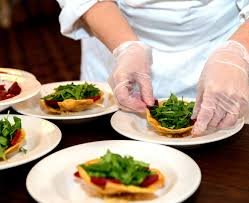Prioritizing Food Safety In Retail Environments
Food safety involves adopting comprehensive routines like hand washing, color-coded utensils, and logging equipment temperatures. These efforts ensure compliance, build customer trust, and set a high standard for competitors. Studies show robust protocols reduce foodborne illness outbreaks. Treating daily inspections as inspection days fosters a food safety culture, safeguarding businesses and their customers.
Food safety is crucial in retail food service, influencing product selection, preparation, and customer service. It involves embedding smart routines into daily tasks, from ingredient delivery and storage to the final point of sale. Equipment choices, such as hot food display equipment, are crucial for helping staff keep prepared dishes at optimal temperatures, minimizing the risk of dangerous bacteria, and ensuring every meal meets regulatory standards.
Common Challenges And Risk Factors
Retail delis, supermarkets, and foodservice counters face operational challenges due to the high volume and variety of products. Cross-contamination is common due to close handling of raw and cooked foods and busy back-of-house environments. Small oversights can lead to costly health violations. High staff turnover, rushed schedules, and expanding menu options add pressure on food safety systems. Successful establishments foster an environment where safety concerns are openly communicated, mistakes are learnt, and continuous improvement is the norm.
Training Staff Effectively
Food safety is crucial for businesses, and comprehensive staff training programs should go beyond written tests. Onboarding should involve hands-on demonstrations of hygiene, cleaning, and equipment use. Regular refresher courses and scenario drills help staff spot hazards early and react confidently to unexpected accidents. Real-life simulations make protocols more memorable. Leading retailers prioritize updating training with new threats or products, encouraging employee questions, and rewarding safety-minded behavior. This creates teams that value accountability, reduce mistakes, and foster ownership, leading to lower inspection violation rates and higher employee morale.
The Role Of Store Layout And Equipment
Store layout significantly impacts food safety and operational flow. Clear paths and separate prep areas for raw meats, produce, and ready-to-eat foods reduce cross-contamination. Foodservice operators should prioritize easy-to-sanitize, durable materials for display and storage units. Modern, safety-centric layouts include non-porous countertops, handwashing stations, and quick disassembly and cleaning equipment. Visible cleaning schedules and signage reinforce these values, ensuring safety is always the top priority for staff and customers.
Monitoring Food Temperature And Quality
Predictive food temperature regulation is crucial to prevent harmful pathogen growth. Hot foods should be kept at 140°F or above, while cold foods should be below 40°F. Smart retailers use digital thermometers and wireless sensor systems to monitor temperature. Regular checks and visual inspections for spoilage indicators provide a safety net against liability and food waste. Automated alerts can reduce risk and maintain a brand’s reputation.
Using Technology To Support Safety
The last decade has seen a technological revolution in food safety management, with automated checklists, cloud-based record keeping, and AI-powered analytics now accessible to even smaller retailers. These platforms streamline compliance by providing real-time logs, temperature monitoring, and instant alerts, allowing managers to focus on customer service. Advanced systems can also flag problem areas and predict breakdowns based on historical trends, enabling transparency and open communication between inspectors and customers.
See Also: Theridgelinereport.com

